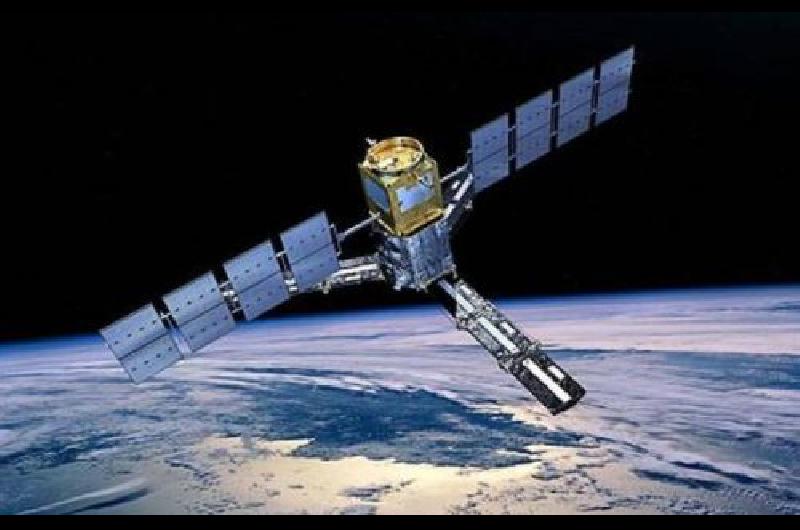Electricidad y satélites: puentes entre China y América Latina
En sendos artículos para el Wilson Center y para Geopolitical Futures de Estados Unidos, dos analistas repasan la cooperación y las inversiones en los sectores eléctrico y aeroespacial entre el gigante asiático y la región latinoamericana.
En el primer caso, Margaret Myers repasa las grandes inversiones chinas en el sector eléctrico de América Latina, donde hay obras de envergadura en varios países.
Por su parte, y ante el viaje que el presidente brasileño Luiz Inácio Lula da Silva hará a China la semana que viene, Allison Fedirka analiza para Geopolitical Futures los convenios del país asiático con los países más avanzados de América Latina en materia satelital, como Argentina. Lula y Xi Jinping firmarán acuerdos para ese sector.
Reproducimos abajo este último artículo:
Next week, Brazilian President Luiz Inacio Lula da Silva and his science and technology minister will be in China to negotiate the construction of a new satellite. They want the satellite for climate observation and to monitor deforestation in the Amazon. Brazil and China have more than two decades of history working together on satellites, but this potential project takes place in a very different geopolitical context than past dealings. Space has emerged as a serious battleground in the U.S.-China rivalry, and Washington is sensitive to any Latin American space collaborations involving Beijing. Anxious about security risks in its own hemisphere, the U.S. has only recently emphasized space cooperation with its southern neighbors.
Situational Awareness
Space is a critical domain for national defense. Businesses and militaries worldwide depend on satellites for information and communications. A few countries – the United States, China, Russia, Japan, the United Kingdom, Canada, France, Germany and, arguably, India – boast robust space programs with military applications. Historically, the Americans are the dominant player in space, but thanks to massive public investment the Chinese are quickly catching up. For the rest, partnerships are essential to overcome the immense technical and financial challenges.
First, a primer. The space domain includes terrestrial, orbital and link segments. Fixed, secure ground locations are required to monitor space activity and communicate with hardware in orbit. Ground stations support telemetry, tracking and command of satellite and spacecraft operations. However, ground stations can’t communicate with satellites when large objects – the Earth, for example – get in the way. Instead, states need a global network to maintain space situational awareness. This includes the detection and tracking of launched and orbital objects, threat assessments, and data integration and exploitation. Situational awareness enables warfighters to predict the future location of space objects and the overall operational environment. The broader the satellite and observation network, the more complete the coverage. Therefore, interstate cooperation is critical, and it presents opportunities for regions like Latin America to accrue the funding and expertise to develop their own space capabilities.
National space programs in Latin America are more than 60 years old, but funding has always been a problem. Prior to the pandemic, the U.S. government allocated $22.7 billion to space programs, while Brazil, Argentina and Mexico together spent roughly $100 million. Until fairly recently, space was not a priority in the region. China’s emergence in the sector, combined with the falling cost of launching a satellite, helped change this. Vast borders are ripe for smuggling, while remote areas are difficult to monitor for illegal mining or deforestation. Satellites would boost governments’ abilities to secure their borders and enforce the law within them.

China was quick to develop space partnerships in the Western Hemisphere. Determined to become a leading space power, Beijing targeted middle-income countries for partnerships and leveraged its technology and expertise through commercial agreements. Moreover, ground stations close to the equator provide more robust satellite coverage, making South America even more attractive. Today, China operates or can access a series of space observation centers across South America.
Beijing’s growing footprint in the Latin American space sector triggered alarm in Washington. The U.S. worries that China could use the proximity of its space facilities to spy on U.S. communications. There is hardly any daylight between civilian or commercial space research and military applications, especially in the Chinese case. (For example, GPS is useful whether you are trying to pinpoint a local restaurant or armed insurgents.) Latin American governments have few problems with this, given their own interest in the technology’s contributions to national security. For instance, Brazil’s national defense strategy promotes heavy use of satellites to monitor the border. Although its satellite negotiations with China will center on deforestation, the areas of interest significantly overlap with Brazil’s military interests.
Washington Joins the Race
The U.S. strategy for countering China’s ambitions for space in Latin America started to take shape last year. Last summer, U.S. Southern Command and the Space Force’s Space Training and Readiness Command hosted their first Latin America Space Doctrine Conference, intended to incorporate space into the U.S. security cooperation framework for the region. Argentina, Brazil, Chile, Colombia, Peru and Uruguay attended. A second conference in January 2023 attracted 11 Latin American countries. Washington hopes to convince Latin American states to adopt U.S. standards and procedures so that they can share information – and shut China out. It has highlighted the immediate payoffs of cooperation, such as access to information to counter illegal logging, mining and fishing, as well as crop monitoring. Eventually, the U.S. says it wants to conduct large-scale space-based exercises with Latin American militaries, which China has never done.
Alignments in much of the region are practically settled. Venezuela and Bolivia are firmly in China’s camp, while traditional U.S. security allies Colombia, Chile and Peru are sticking with Washington. The current focus of the U.S.-Chinese competition for space partnerships is the southernmost part of South America. The Southern Cone countries, along with Mexico, have the most advanced space programs, and their alignments will shape security in the Antarctic region. A presence there is important to keep the Strait of Magellan and the Drake Passage free and clear for navigation.
By far the most prized relationship is with Brazil, the Latin American country with the most advanced space program. Brazil is well positioned to monitor most of the South Atlantic and hosts the Alcantara Space Center, the closest launching base to the equator. Five years ago, the U.S. and Brazil signed an agreement to share information about known space objects, including Brazilian satellites. They also discussed a deal to permit the U.S. to launch satellites from Alcantara. Some of the Space Force’s first international outreach efforts in 2020 involved discussions with Brazil about opportunities to collaborate. Not to be outdone, China has leveraged its decades-old relationship with Brazil in satellite development and launches as well as telecommunications.
After Brazil, Chile was the next Latin American country that U.S. Southern Command engaged in direct space talks. China leases some facilities at the Santiago Satellite Station in Chile, but the station’s operator, the Swedish Space Corp., has said it will not renew the contracts. The U.S. will probably fill the void. Meanwhile, Argentina hosts China’s most important space observation facility in the region. The secretive Espacio Lejano station in Neuquen is owned and operated by China; even the Argentine government’s access is restricted. The intelligence community assumes China conducts both scientific and military activity there.
Mexico is the exception to the U.S.-China competition for space partnerships. Mexico is too close to the U.S. to form a strong partnership with China, but space is too sensitive for Mexico to depend on the United States. Therefore, Mexico has advocated the creation of a Latin American and Caribbean space agency. A regional grouping to pool resources makes sense for Mexico – and many countries have signed on – but funding and the huge technological disparities between members remain obstacles. Mexico will likely have to give the U.S. major concessions to secure a partnership, or accept that it will trail its regional peers.







PUBLICAR COMENTARIOS